What’s the Best CHICKEN FEED?
by Jennifer Behm – Chicken farmer| Last Updated– 17 January 2021
- What to feed your laying chickens?
- Organic Chicken Feed Recipe
- Chicken feed for winter
- Organic chicken feed for laying hens
- The best Treats for Chickens
- Feeding Young poultry Chicks
- What NOT to feed chickens?
What to SUPPLEMENTS Feed Your Chickens?
Just like the rest of us, chickens need a well-balanced diet in order for them to stay healthy and productive. There are many views on what is best for feeding chickens and many accounts of grandmothers feeding their chickens nothing but kitchen scraps. However, a lot of these birds were allowed to roam freely and therefore would have had access to extra protein in the form of juicy bugs, grubs, and minerals from foraging widely. In addition, chickens fed on the kitchen, scraps may have survived, but may not have been totally healthy or have reached anywhere near their egg-laying potential.
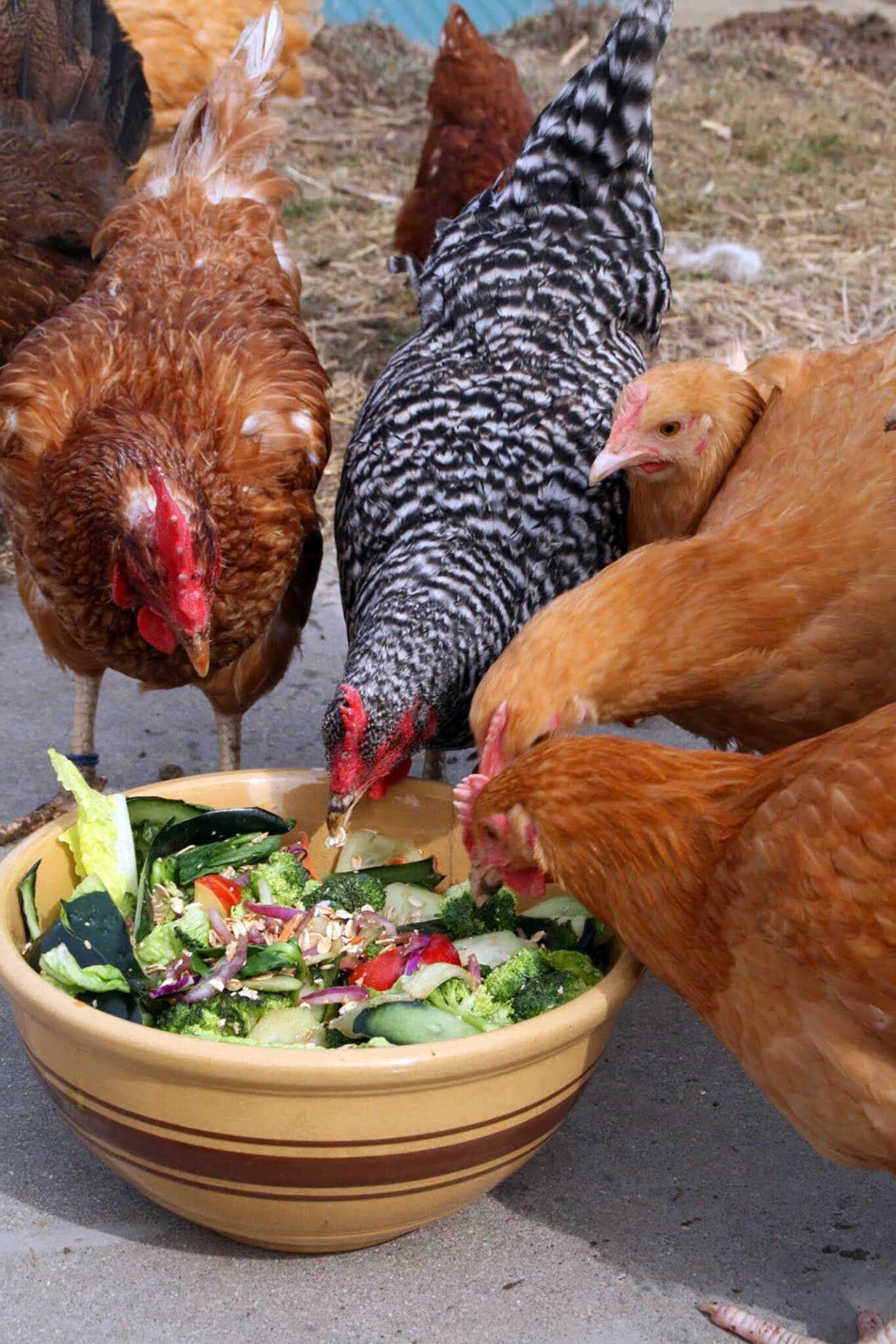
Pellets or Mash
If you want to be sure of having healthy birds and abundant eggs, it is advisable to feed your chickens one of them all in one feeds that are now available, these contain the correct balance of nutrients, vitamins, and minerals, for their age and their purpose, be it eggs, meat or both. These are available as pellets (Layers pellets or Growers pellets ) or as a powdered mash. Layers pellets have about 16% protein content, which should be sufficient to keep your hens healthy and productive. The mash is slightly cheaper although the chickens will often just pick out bits from it and leave the rest; for this reason, a lot of chicken keepers prefer the pellets. The food should be freely available and kept in a waterproof feeder, for the birds to help themselves as they wish. Chicks or young growers will require chick crumbs and growers pellets.
Corn
Mixed corn is great as a treat and for getting chickens actively scratching around. It is usually made up of 80 to 90% wheat and 10 to 20% maize but contains only 2.5% Protein. A handful for each hen late afternoon helps them to have a full crop overnight. Be careful not to give them too much, as the maize especially is very fattening, which is probably okay in moderation in cold weather. However, if hens get too overweight their egg production will drop dramatically.
Scraps
I would never advise household scraps to make up any more than 25% of the chickens diet as it is too hard to monitor if the birds are getting a balanced enough diet. A good way of dealing with the scraps is to mix it into a mash with commercial mash feed. Adding water the mixture should be a damp crumbly texture. Be careful that there is nothing in the scraps which could get stuck in the chickens crop and cause problems.
Greens
If your birds are able to forage freely then they should have access to enough greenery. If not try to make sure they have access to cut grass and discarded parts of your cabbages and other greens will be appreciated.
Grit
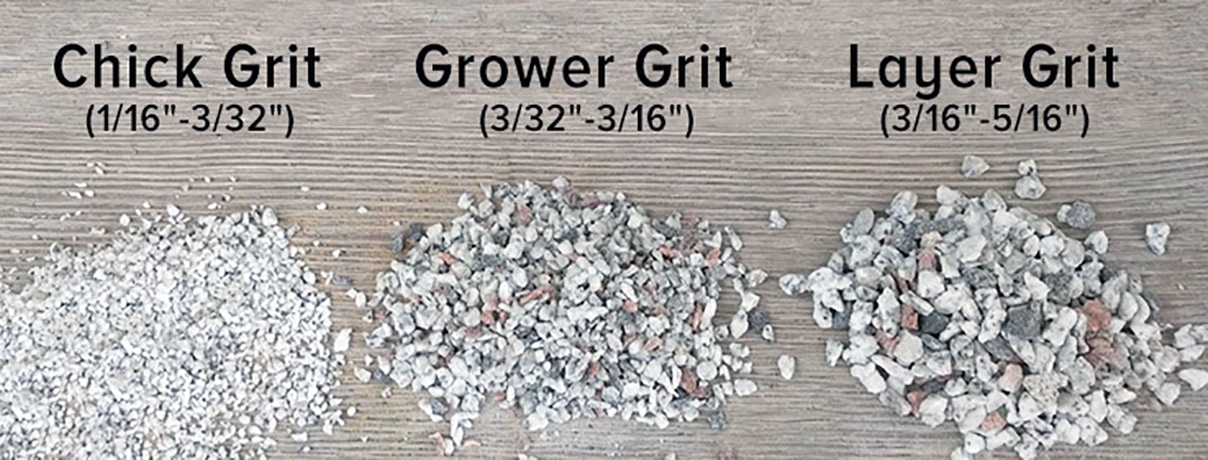
Flint grit and oyster shell grit must also be available. Flint grit helps them grind down the food and the second is full of calcium to help them produce strong egg shells. Crumbled egg shells can also be provided.
There are two types of grit available for your chickens. Flint grit or insoluble grit which is used for grinding food down and Oyster shell grit, which is a source of calcium to help form strong egg shells.
Flint or insoluble grit
Chickens don’t have teeth, or if they do then only very rarely (“as rare as Hens Teeth”). To grind down their food they need to use grit and their gizzard which is a strong muscular organ that forms part of their digestive system. Chickens pick up grit whilst foraging and retain it in their gizzard to perform this grinding process. It is for this reason you often see birds such as pheasants pecking at the side of the road and what often ends up costing them dearly.
If your chickens are kept truly free range then they will find enough of this on their own but these days, few of us have space or the security from predators to be able to allow them to do this completely naturally. Therefore grit will have to be given as a supplement. However, this type of grit is cheap and available from most good pet or farm shops.
Oyster shell or soluble grit
In order to form strong eggshells, chickens require a certain amount of calcium in their diet as most of an egg-shell is made up of calcium. Nowadays with the research that has been done for formulated feeds (available as layers mash or pellets), it isn’t so critical to provide oyster shell grit because a lot of poultry food contains sufficient calcium. However, it will not do any harm to mix some in with the flint grit that they need just to make sure they get enough.
If you think how many eggs some high layers produce in a year, then you will understand that they do need to have access to quite a lot of calcium. If you can not find Oyster shell grit from your local store, crushed egg shells will do the job. Put them in the oven for 10 minutes to dry them out and crunch them up before mixing them in to your grit hopper.
N.B Do NOT give chicks oyster shell or limestone. This extra calcium will cause bone development problems in chicks and may also damage their kidneys.
Grit hoppers
Grit containers come in a variety of shapes and sizes, the important thing is to make sure that they are of a design that will not get tipped over easily or filled up with water. It may be worth spending a bit more on a more expensive galvanized one to start with, but which will last longer.
| Image | Product | Top rated |
Scratch and Peck Feeds Naturally 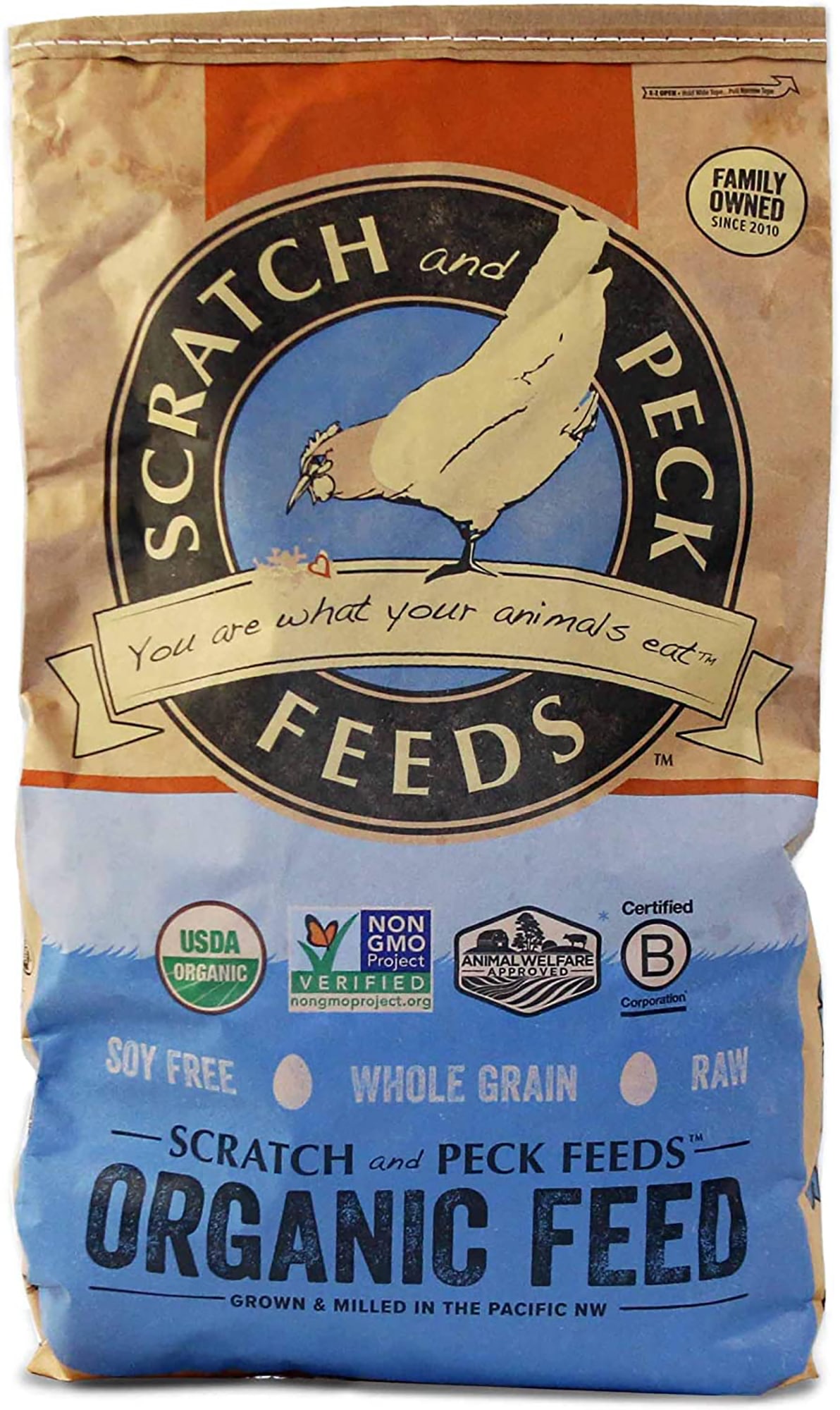 | Organic Layer Feed for Chickens
| Check Price |
Manna Pro 10 LB 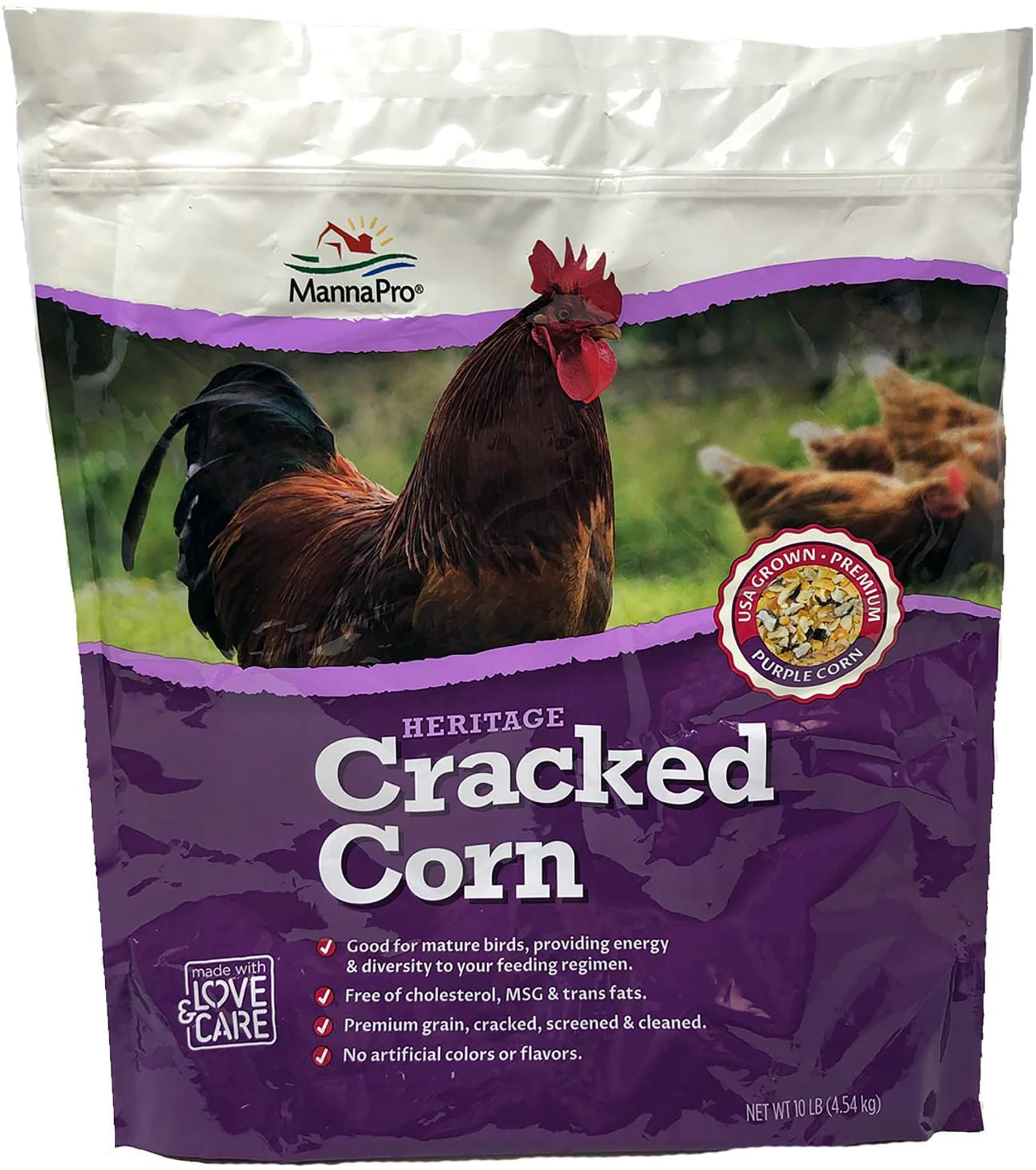 | Cracked Corn with Purple Corn
| Check Price |
FLYGRUBS Superior to Dried Mealworms for Chickens (5 lbs) 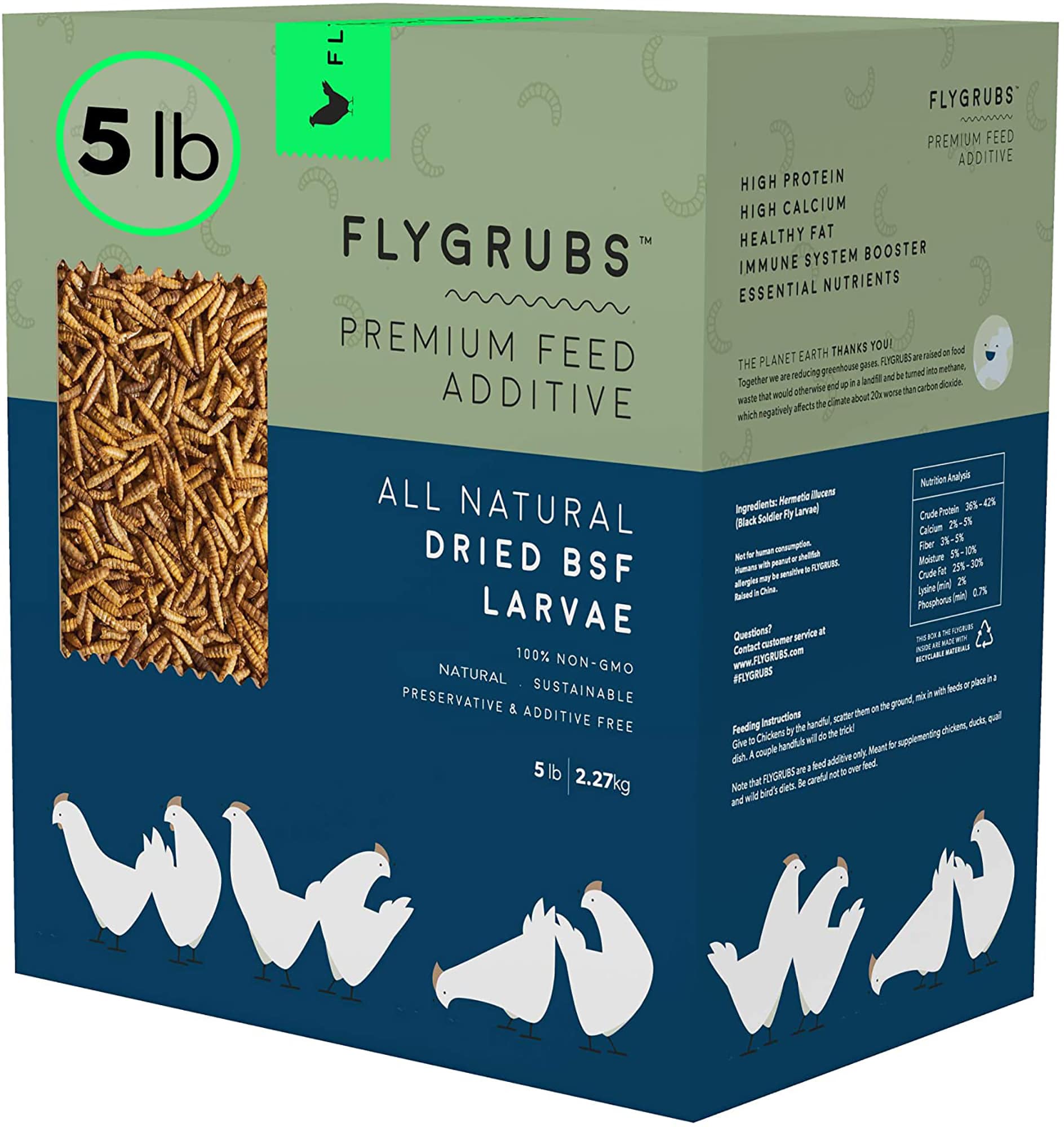 | Calcium Than Meal Worms - Chicken Feed & Molting Supplement
| Check Price |
Animal Health Solutions 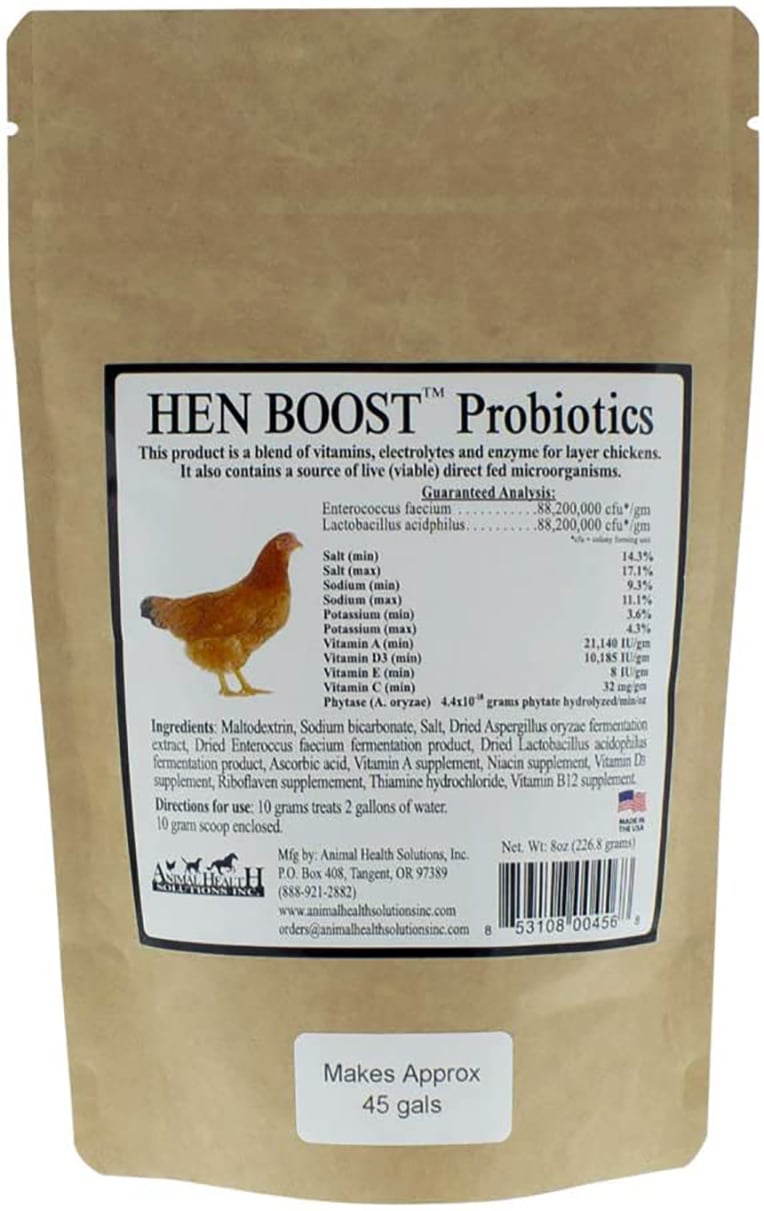 | Hen Boost Probiotics, Help Boost Immunity & Hydration
| Check Price |
Supports Healthy Gizzard Development - 7-lbs 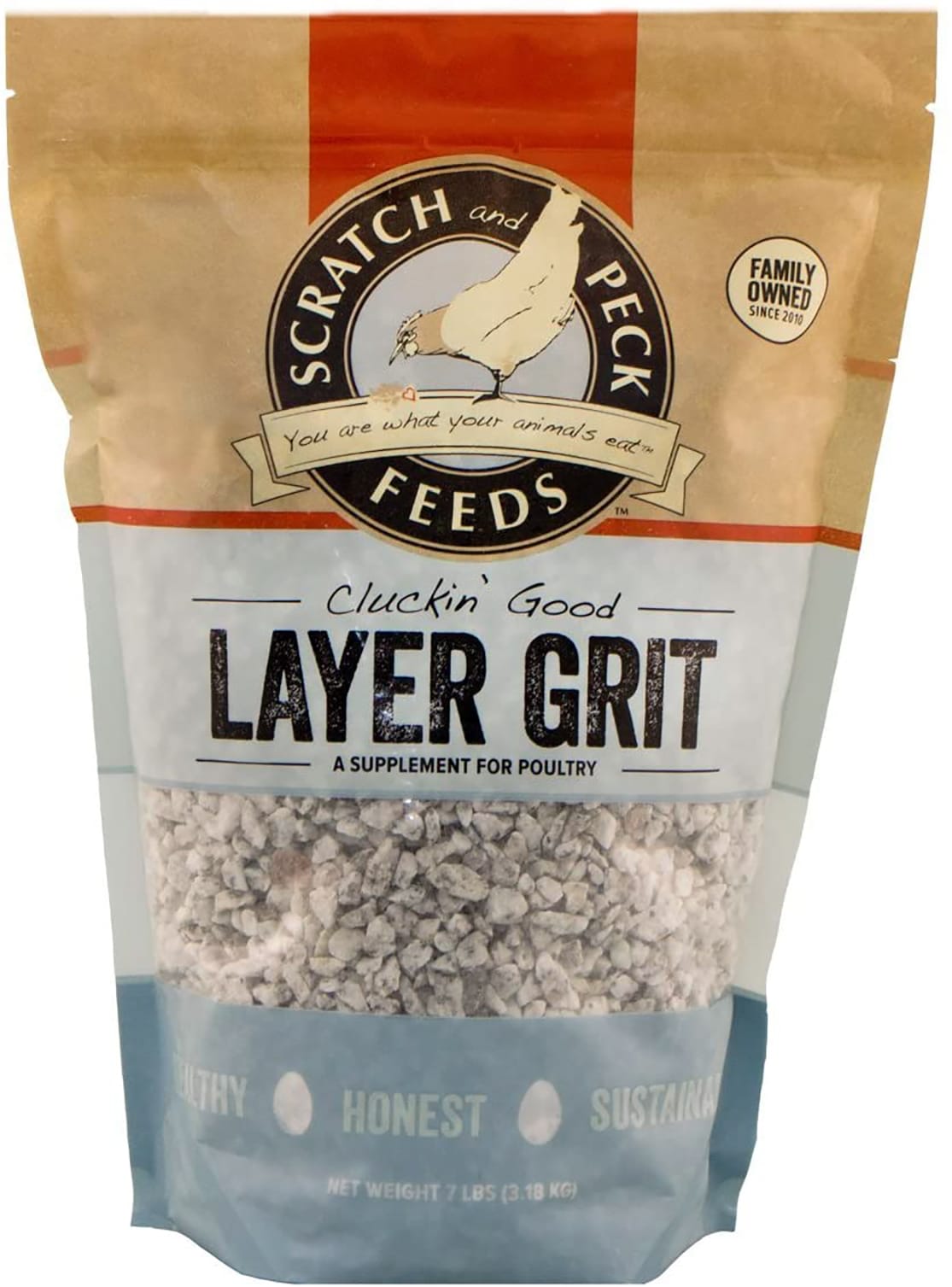 | Feeds Cluckin' Good Grit Supplement for Chickens
| Check Price |
Organic Homemade Chicken Feed Recipe
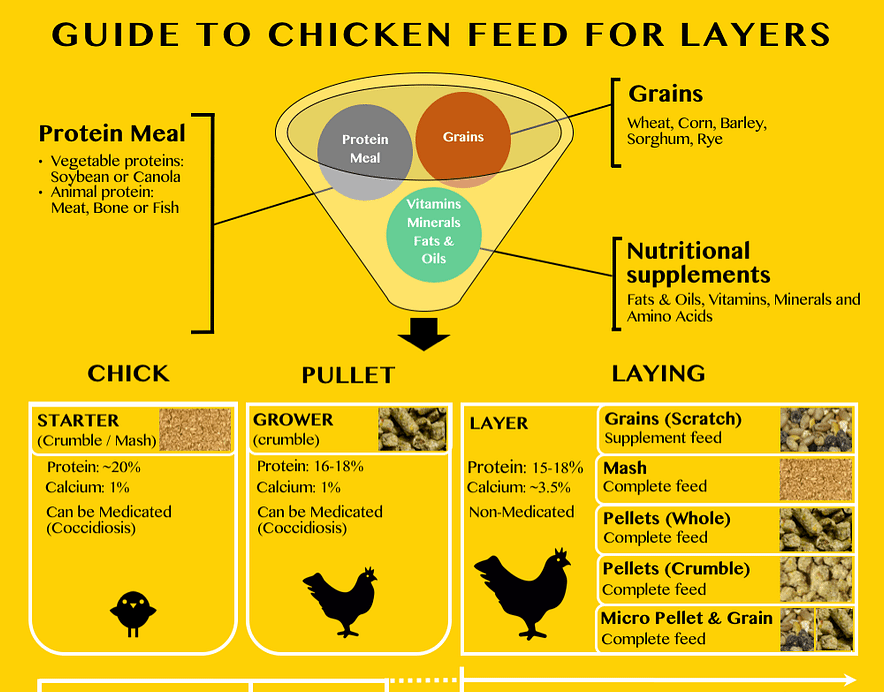
Chicken feed for winter
In the wintertime, chickens are always going to lay fewer eggs. The reason being the amount of light that they received during the day is shorter and the nights are longer. And this is really the biggest impact as far as how many eggs they lay per day, obviously one, but, you know, in general as a clock, so some things you can do to help mitigate that and kind of encourage them or trick them to lay more eggs.
High protein
My first tip I should say is give them really high protein, high quality feed.
Probably like corn or millet, stuff like that. And I always soak them too. The reason why you soak them is you are basically kind of in a way, sprouting the seed. And it is releasing acid, which is considered an anti-nutrient and will basically block the chicken from absorbing as many nutrients as possible. And the nutrients, the protein, all of that stuff is really what allows the chicken to be able to produce high-quality eggs.
And in the winter, they have to survive against the freezing frigid cold temperatures of winter and along with laying eggs, they need really high-quality protein. Now, along with the food or the chicken mash, you can also grow them, really protein, dense, like fodder or microgreens. I’ll grow sunflower seed, microgreens, and those are really high.
You can grow a sunflower seed greens, just in little trays on your window sill. And all they have to do is Sproul and turn green, and then you just bring it into the coop and feed it to them. And it’s an extra source of protein.
Another thing you can do in regards to giving them more protein or more food issue you can use, if you have like, maybe old oatmeal or just oatmeal in general, you can cook that and give that to them as just an extra carb that’s hot. And they kind of, really like that in the winter when it’s so cold, that’s it biting me.
The other thing I do is if I make rice or anything like that, Brown rice, white rice, and I have extra, or we just don’t eat it, I give it to them too. And again, it’s a car just kind of gets their body, their internal temperature higher, and just kind of allows him to, lay eggs, more easily and more readily in the winter.
3 pro tips
It gives your chickens really high-quality high protein feed. Number two is either get breeds that lay well in the winter and, or have space for them to roam outside in the winter. And number three is to make sure that you give the chickens artificial lighting with battery-powered or PLA, outlet powered, lights. And if you do all three of those tips, I guarantee you’re probably going to see an increase in your egg production in the winter.
The best Organic chicken feed for laying hens
The best Treats for Chickens:
Radishes
Number one is radishes. I have so many radishes growing in our garden right now. These are just a great little treat for the chickens. There’s really no downsides. The radish tops and the roots are great to get to the chicks as a treat.
Wild Clover
So the second thing I want to talk about is if you have any wild Clover growing around, or even have this plant right here, which is called hairy vetch. This, the chicken’s love, it’s a nitrogen-fixing crop. This just grows wild. It’s kind of almost like I consider it like a pasture type of feed. Um, I just supplement it here and there as a treat, but Clover or you can buy this seed and it just grows crazy. Are also great CRA uh, ah, a great treat to give to your chickens.
The ends of the cilantro
So the next on my list is I like to give my chickens, the ends of the cilantro. I have a ton growing right here in this bed. Um, cilantro is supposed to help with kind of detoxing heavy metals in humans and kind of goes the same for chicken. So they love the ends of you know, cilantro stems. But if they are rotten or black, I just give it to the composting worms that I have in the house.
Lettuces
So number four on my list is lettuces. You don’t want to give them an iceberg necessarily because an iceberg really has no nutritional value. Everything that I’m giving the chickens as a treat has some purpose that does benefit. The red-colored type lettuces are very, very good to give it to your chickens. Remember you are what you eat and the same as with the chickens. So if you have extra lettuce from your dinner, you eat salads. As I said, that’s a great addition to give us a nice treat to the chicks.
Cabbages
So the last thing on my top five list is anything that is in the brassica family, which is, you know, cabbages, kale, broccoli, Brussels sprouts, they’re so nutrient-dense, there’s no side effects or negatives to the, uh, the, these types of vegetables. So the leaves of all the, you know, broccoli or the stems I just give to the chickens, or, you know, all that little leftover stuff. That’s a great thing to throw into your compost bin. And then also I see it as a, it’s more compelling for me at least to want to eat more veggies. I love vegetables, but eat more vegetables because then, Oh, your chickens get to eat them. And then you get to eat the eggs and they get all that nutrient and they, you get just that amazing egg that you can’t buy at the store.
Insects (Especially Mealworms)
Feeding pests to hens is very enjoyable as well as gratifying, specifically when the pests you’re feeding them were just in your yard, consuming your tomato leaves. Pests are a great source of healthy protein for chickens, and they just love them.
Feeding Young Poultry Chicks
| Image | Product | Top rated |
Medicated Chick feed formulated with Amprolium 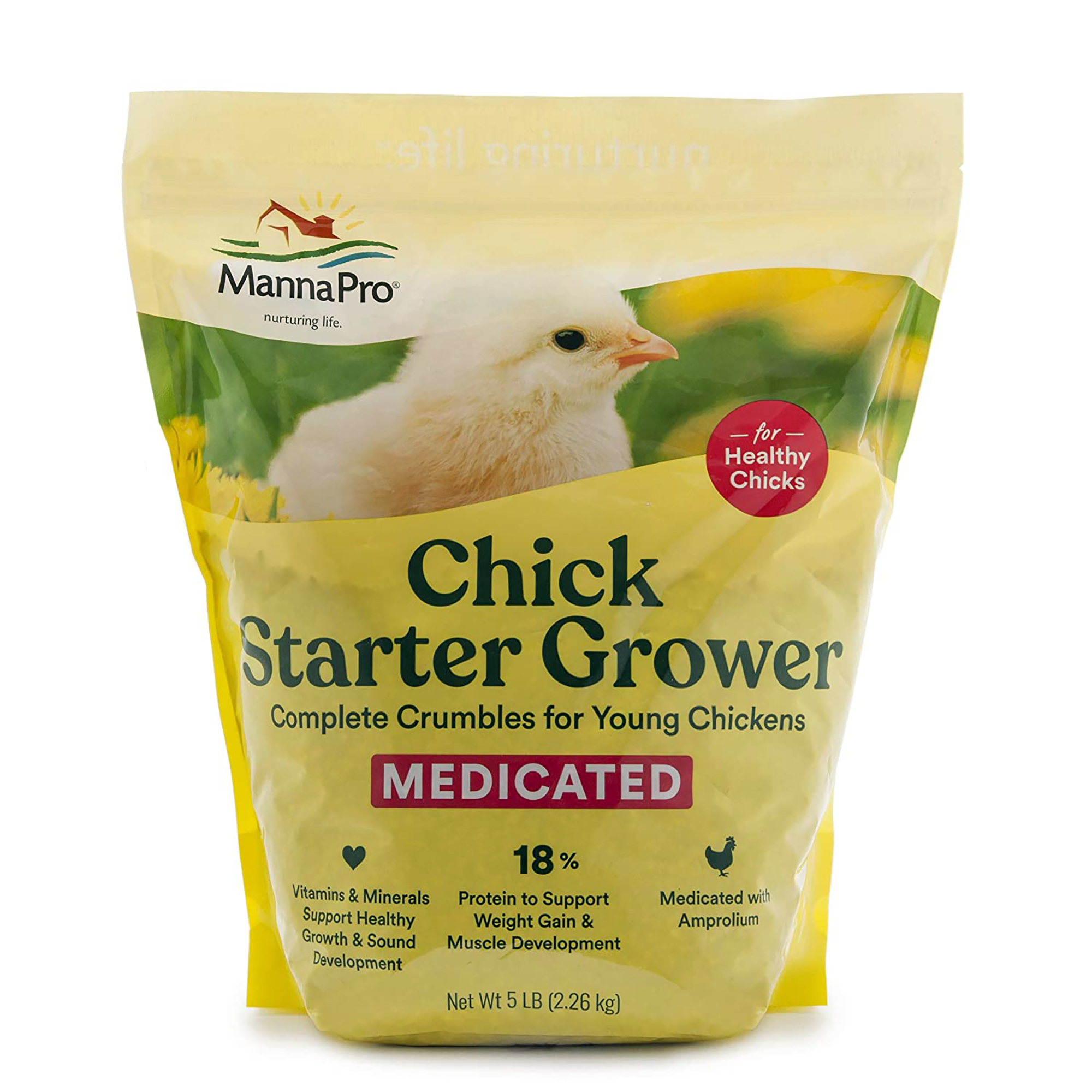 | Manna Pro Chick Starter
| Check Price |
Young chicks are very messy and just like any young creature they enjoy playing around. This means that food and water will tend to get knocked over no matter how well made the containers.
Water
Chicks like adult chickens need a constant supply of clean water. However you should never use a flat open water dish especially when they are very young as they will kick bedding in it and poop in it and you will find yourself continuously changing the dish. Worse than that, young chicks like young children can drown in even the shallowest of water. To be on the safe side we suggest you use a special chick waterer which can be purchased cheaply, they will still manage to kick bedding in it, but raising it slightly off the ground from two weeks old should help.
If your chicks do not appear to want to drink, try dipping one of the livelier one’s beaks in the water. You may need to do this a few times before the chick responds. Once one drinks from the water container the others will usually follow its lead. But do check that all the chicks are drinking as lack of water will quickly kill them. Never be tempted to try to give a young chick a drink with a syringe as it is remarkably easy to drown them this way.
Food
Again a flat dish is not a good idea as the chicks will quickly mess it up. We suggest the best solution is to buy a special chick feeder. It is not 100% chick proof but it will save a lot of time.
As to what to actually feed the chicks, this is easy as there are special foods available that contain the right balance of nutrients in relation to the chicks age.
Newly hatched chicks will not need to eat for the first 24 hours as during that time they will be absorbing their yolk sac, which can keep them going for a day or two. This is what makes shipping newly hatched chicks around the country possible.
Chicks will need a ‘Starter Feed’ which comes either in mash or crumbs (crumble) depending upon how ground down it is, from day 1 until they are ready for a ‘Growers Feed’, which they should then be given until ‘Point of Lay’. The exact timing of when the chicks should change from one type of feed to the other will depend upon the exact make up of the feed, so read the manufacturers instructions carefully. It is also possible to buy a starter/ grower mix which can last up to 16 weeks of age.
There are various mineral and vitamin supplements available that can be added to the chicks water. However if you buy a good quality starter feed these should not really be necessary.
Let the chicks have access to food 24/7, as unlike a lot of other young creatures they will not overeat.
If you seem to be having a problem getting your chicks to start eating, try putting some food on a piece of cardboard or similar material and gently put one of the chicks’ beaks to the food. Keep trying this until one starts eating, you should find the noise of the food, and the chicks beak on the cardboard will attract other chicks, and soon you will have all the chicks madly pecking at the food.
Grit
Chickens need grit or small pebbles to aid digestion as they don’t have teeth. You should use canary or parakeet grit or even sand for baby chicks, which you can buy at most pet stores or pet sections of grocery stores.
N.B Never give chicks oyster shell or limestone as this extra calcium, will cause bone development problems in chicks and may also damage their kidneys.
What NOT to feed chickens?
Dried beans
The five worst foods that you can feed your chickens. The first one on my list is dried beans. Uh, now if they are soaked or cooked for at least five hours, so cooked and then obviously cooked until soft, they are fine, and fresh green beans from the garden are completely fine, but you definitely don’t want to feed them the hard dried bean. It contains a compound like Phytel Hema, gluten. It’s something along those lines. I’m not great with scientific words, but, um, it basically, it will kill your chickens that compound if they eat it. And if they do injustice, there’s kind of nothing you can do. They can die in a couple of hours. So this is a really big, no, no, never give them to your chickens. And if you are going to feed them means, like I said, you need to at least have them be cooked.
Moldy or Rotten food
So my second thing is never to give your chickens moldy or rotten food. Um, a lot of these things on my list are just kind of like common sense things like would you eat rotten food or would you eat dried hard beans now? So here’s a good example. You know, the mold spores, you don’t know what’s in it. There’s, you know, it’s just, you wouldn’t eat it.
Onions
Don’t give that to your chickens, which brings me into number three, which is onions. Onions can give the eggs a weird taste, and then it also can affect the chicken size. I’m not sure if it’s a calcium deficiency, but it can, it can either affect that or like the red blood cells, whatever is, uh, the compound is inside of the onion. So, I mean, number one, who doesn’t even want, who wants to eat like onion flavored eggs, unless you love onions, but don’t, you know, they’re not good for chicken, so don’t do it. Number three is onions. Don’t give them that. Just compost it in your regular compost bin.
The potato skins and the raw potato
Number four is I have a little green red potato here. The potato skins and the raw potato itself are not good for chickens. They contain Solanine and potatoes are in that nightshade family. So, uh, anything in the nightshade family, I just basically don’t give the chickens, which is obviously tomatoes, tomato leaves, peppers, a plant, stuff like that. Or on that family, they just, again have toxic compounds. And again, people were always kind of advice, never eat a green potato because of the toxins that form, uh, with the color change in the potato. So never give them potatoes or anything in that nightshade family.
Avocado
Number five is avocados. Now there is a little bit of debate with avocados. As far as the flushes concerned. Sometimes I will actually give my chickens, like just a little bit of avocado. I’ll throw it in there, but, uh, the pit and the skin have again, toxins that are very lethal to chickens and can make them sick and cause other different like deficiencies and problems with your chickens.
Caffeine
So it’s just better to steer clear away from these items. And just again, compost them. Now. I said there was five I’m actually going to include one more, which is rummage through my bucket of trash is coffee grounds or caffeine, tea bags, stuff like that. Birds shouldn’t eat caffeine. It’s very, it’s not good for them again for various reasons, complex compounds and you know, grounds that they shouldn’t eater in the caffeine. So anything that contains caffeine, tea bags, stuff like that. Just go ahead and compost these in your regular compost bit.
Read more from prestigequeen:
References:
- Poultry feed – en.wikipedia.org
- The Encyclopedia of Farm Animal Nutrition – books.google.com
- Nutrition and Feeding of Organic Poultry – books.google.com
- Delay in feed access and spread of hatch: Importance of early nutrition – orbi.uliege.be
- Insects as feed – en.wikipedia.org
Contents

best material on the topic
Scratch and Peck Feeds Naturally
This is excellent food. My chicks and hens have constantly enjoyed scrape as well as feed products. Nevertheless, this food is to huge for the initial week of a chick’s life. Till day 12 I made use of a coffee grinder I never had a use for till I got chicks as well as this chick food. You will require to feed chick grit from the first day with this too so chicks will certainly have the ability to digest it as grit is in fact what will certainly grind up the food in their little stomachs. Additionally let it be noted (this may not take place to all laying hens, yet it did to mine) this can create your hens to end up being egg bound as well as lay unusually huge eggs due to large amounts of healthy protein which is required for chicks, not laying hens. My idea if you incorporate groups to keep the 20% protein foods far from laying chickens, however where chicks get it. Various other than that complete thumbs up on the food.
FLYGRUBS Superior to Dried Mealworms
Our 3 girls definitely LOVE these flygrubs. I normally provide mealworms along with their calcium-rich food but since the climate has turned cooler, points have actually altered a little bit … among our ladies continues to lay just great however another stopped laying entirely and one more is laying “soft” eggs and/or super fragile eggs. We are regularly getting 2 sturdy-shelled eggs daily along with the occasion third egg every 3-4 days! We have actually utilized other brand names of fly grubs as well as mealworms before however never ever had this fast as well as favorable outcome. In addition to the item being fantastic, the customer care is excellent. I was spoken to straight from the small-business proprietor, Emily, not long after my order was positioned in addition to after package arrived. Most definitely will reorder … will not need to for at the very least a month or two, however, as the girls have a lot of fly grubs to make it through till then